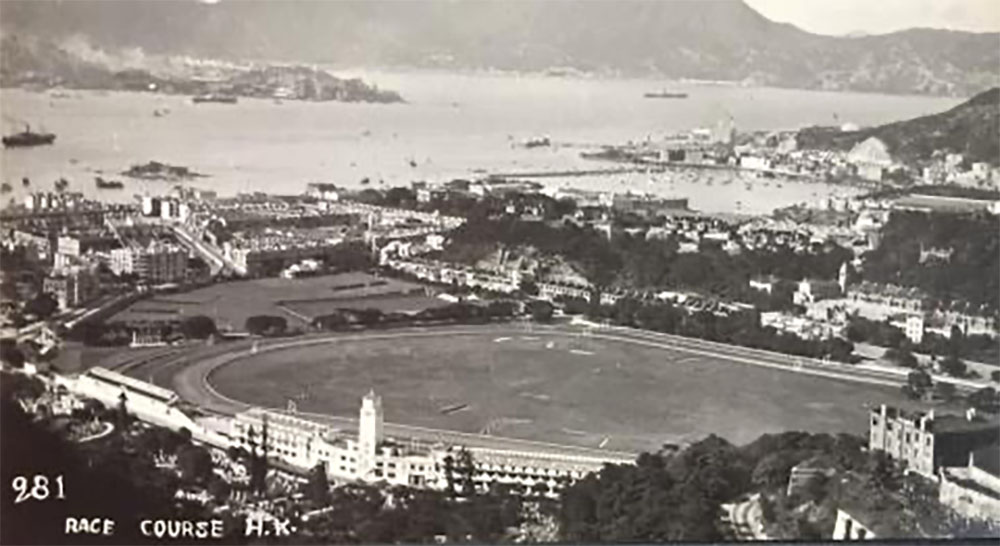Hong Kong horse racing
Horse racing in Hong Kong is enormously popular for local and overseas punters, thanks largely to its image as a squeaky-clean and transparent racing jurisdiction.
HK has the highest racing turnover in the world and its season prizemoney is near $HK1 billion ($US128 million).
The sport is policed by the powerful Hong Kong Jockey Club, which has a government-backed monopoly on wagering on racing, sport and lotteries.
The racing in Hong Kong is split between the spectacular and unique Happy Valley course, set amid skyscrapers and mountains, and the imposing Sha Tin in the New Territories where the horse population is housed and trained.
Most Wednesday nights the action is at the city course for Happy Wednesday, a non-stop party where you don’t need an interest in horses to have a good time, while on Sundays (and some Saturdays) the focus is on Sha Tin, home to all the group 1 racing in Hong Kong.
In a typical season more than 2 million fans will flock to watch the races, an average of more than 24,000 per meeting.
Many of the best trainers and jockeys in the world flock to Hong Kong to live the racing dream and, more pertinently, make their fortune in a low-tax environment (a flat 16 per cent).
And the attention of the racing world turns to Sha Tin for International Day each December, a day featuring enormous prizemoney and four group 1 races.
Betting on HK horse racing
Racing enthusiasts the world over gravitate to Hong Kong racing because of its almost unrivalled integrity.
The racing and horse population in this autonomous territory of China is under intense scrutiny at all times.
For example, all veterinary treatments of horses are on the public record and all trackwork and trials are filmed and made available on the HKJC’s website.
And all participants are employees of the club.
There is seemingly no end to the amount of information available about the limited horse population, so serious form students will fancy their chances of turning a profit.
Computer teams have come and gone from Hong Kong, with some making their fortune and others leaving broke.
The betting in Hong Kong is exclusively into the HKJC tote pool, which in 2021-22 attracted turnover of $HK290 billion ($US37 billion). That’s roughly $HK360 million ($US46 million) per race!
Of course, totes from other jurisdictions including Australia, Singapore, the United States, Macau and New Zealand commingle with the HK pool to make the turnover figures even more astronomical.
Any betting pool with that sort of liquidity attracts the serious punter, and market moves (particularly in the minutes leading up to a race) can be followed with confidence.
Top HK racing betting sites
- Outstanding reputation!
- Android and iOS apps available
- Great promotions
- Can restrict winning punters
The best HK racing betting sites will largely be determined by your location and the laws you live under. For instance, in Hong Kong the only legal bookmaker is the Hong Kong Jockey Club, with no licenses issued to betting sites.
However even if you are in Hong Kong, you can wager with offshore betting sites, with man hosted in other countries still accepting punters from this region, and even China.
While the betting situation in Hong Kong is rather murky, punters all over the world wager on Hong Kong racing via online bookmakers and betting apps. HK racing is popular in the likes of Australia, New Zealand, South Africa, England and the USA, which all enjoy thriving racing scenes. Their own regulated sports betting industries cover the Hong Kong races extensively, with Australia and New Zealand in-particularly being intertwined via sending horses and trainers to this par tof the world.
This means you can bet on Hong Kong racing via online bookmakers and betting apps basically from anywhere in the world.
History of racing in Hong Kong

The British, its former rulers, brought the sport of kings to Hong Kong, and the local population embraced it with a passion.
Happy Valley was built in 1845 on a former swamp, with the first meeting held there on December 17, 1846, and the HK Derby first run in 1873.
Racing has been held at the track almost non-stop since.
The Hong Kong Jockey Club was started in 1884 to run racing, though it was not until 1926 that Chinese citizens could become members.
To cope with demand and a soaring population, Sha Tin was built in 1978.
Under the auspices of the HKJC, racing flourished, and in the 1980s and 1990s telephone betting began and betting shops were opened around the city.
These days Hong Kong hosts some of the biggest and best races in the world, with the annual December International Meeting one of the hottest tickets in town.
How Hong Kong horse racing works
The season runs from September to July, with 88 meetings, not a coincidental number considering the significance placed on the number eight in the Chinese culture.
Eight has a similar pronunciation to the words for “wealth” and “fortune”, and the horse carrying the No.8 saddlecloth will often be under the odds.
The pinnacle of HK racing is at group 1 level, with other feature races rated at group 2 and 3.
Most races are handicaps, with the weights declared in pounds (from 133 down to 113)
Lesser races in HK are broken down to Class 1 to Class 5, with Class 1 being the highest … the horses slot into these classes depending on their individual rating. Griffin races are held for unrated horses, which are usually unraced imports.
Barrier draws are done randomly via computer (saddlecloth number has no correlation to barrier number).
There are 24 trainers employed by the club who have a maximum of 60 horses, and only elite trainers from around the world are invited to ply their trade in HK.
Jockeys are likewise carefully screened and then invited to apply for a licence to ride.
With no breeding industry based in land-poor Hong Kong, all horses (and there are roughly 1200 in training at any one time) are imported. Almost all are raced as geldings and few mares race in HK.
Racetracks of Hong Kong
There are two horse racing venues in Hong Kong, and racing is conducted in a clockwise direction at both.
Sha Tin
The magnificent Sha Tin course in the New Territories is a fair haul out of downtown HK and can accommodate 80,000 fans, and the horse population is trained there.
It was built in 1978 and Sha Tin has turf and all-weather tracks and the meetings are usually conducted on Sundays, with a maximum of 14 runners in any race.
Also housed at the track is a state-of-the-art racing laboratory.
Happy Valley
Built in 1846 and rebuilt in 1995, Happy Valley has a capacity of 55,000 and boasts a unique eight-level grandstand.
It is built in the heart of HK surrounded by towers and mountains, on the site of an old swamp.
It is the party track with meetings mainly on Wednesday nights – Happy Wednesday – and the beer garden there can be a sight to behold.
Happy Valley has a turf track, with a maximum of 12 runners in any race. It is a tight-turning track and inside barriers can be a distinct advantage.
Highlights of the Hong Kong racing calendar
There are numerous highlights on the Hong Kong racing calendar, but none more so than the Hong Kong International Races.
Hong Kong International Races
The race day at Sha Tin in mid-December is unquestionably the highlight of the HK racing year.
It features four group 1 races – the Hong Kong Cup, Hong Kong Mile, Hong Kong Sprint and Hong Kong Vase – and total prizemoney somewhere north of $HK80 million.
Tens of thousands of punters will be on hand and, given the presence of many world-class international horses, trainers and jockeys to take on the locals, it attracts enormous attention around the globe.
Hong Kong Derby day
The HK Derby was first run in 1873 and is now held over 2000 metres (10 furlongs) at Sha Tin.
It is restricted to four-year-olds and has a prizemoney pool of $HK18 million. It is the final leg of the Classic series for four-year-olds.
List of Hong Kong group 1 races
The Asian Pattern Committee continually reviews races each season to elevate (or drop) races based on the quality of the race participants.
| Race | Month | Distance | Prizemoney ($HK) |
|---|---|---|---|
| Hong Kong Cup | December | 2000m | 25,000,000 |
| Hong Kong Mile | December | 1600m | 23,000,000 |
| Hong Kong Sprint | December | 1200m | 18,500,000 |
| Hong Kong Vase | December | 2400m | 16,500,000 |
| Hong Kong Classic Mile | January | 1600m | 10,000,000 |
| Stewards’ Cup* | January | 1600m | 10,000,000 |
| Centenary Sprint Cup | February | 1000m | 8,000,000 |
| Hong Kong Gold Cup** | February | 2000m | 10,000,000 |
| Queen’s Silver Jubilee Cup# | March | 1400m | 10,000,000 |
| Hong Kong Derby | March | 2000m | 18,000,000 |
| Audemars Piguet QEII Cup | April | 2000m | 20,000,000 |
| Champions Mile | May | 1600m | 16,000,000 |
| Chairman’s Sprint Prize## | May | 1200m | 14,000,000 |
| Champions & Chater Cup*** | May | 2400m | 10,000,000 |
* First Leg of the Triple Crown; ** Second Leg of the Triple Crown; *** Final Leg of the Triple Crown; # Second Leg of the Hong Kong Speed Series; ##4th Leg of the Global Sprint Challenge, Final Leg of the Hong Kong Speed Series.
Tips for betting on HK racing
Hong Kong horse racing is among the most lucrative and competitive in the world, and while there is no magic formula to picking winners, there is some strategy you can employ to improve your wagering outcomes.
Some of the most sage tips for Hong Kong racing include:
1 Stick with the top jockeys
The top few jockeys tend to dominate in terms of strike rates, so they can be followed with confidence. They are generally riding for the most successful trainers, too. In recent years, Australian Zac Purton and Brazilian “Magic Man” Joao Moreira are the go-to riders.
2 Inside gates at Happy Valley
Happy Valley is a tight track with a short straight, so a good barrier is imperative. Unless of course you know a particular horse has the pace to cut across to the fence quickly from a wide draw. Runners fan wide around the turn so backmarkers can cut up along the inside if the pace has been on.
3 Watch the market
Visit the HKJC website and watch the last-minute fluctuations. You may be able to spot a late firmer and take advantage of fixed-price odds with a bookie in your jurisdiction.
4 Rebates from HKJC
If you can sign up with the club and bet in large amounts, rebates on losing bets up to 10 per cent are available. A warning, though: to open an account with the HKJC requires a bank account to be opened in Hong Kong at HSBC, Hang Seng Bank or Bank of China. A must for professional punters.
5 Follow the trainers
Horse racing in Hong Kong is dominated by a couple of the world’s best horse racing trainers, including John Size, David Hayes and Caspar Fownes. If there is a big race there is every chance these three trainers will have contenders around the mark. Their records speak for them really.




